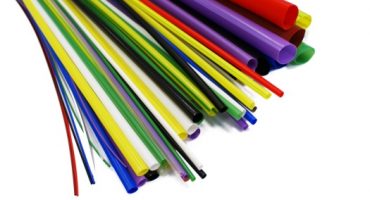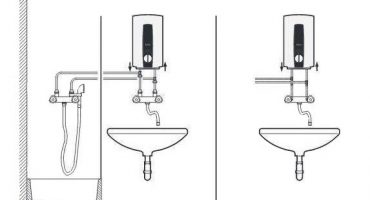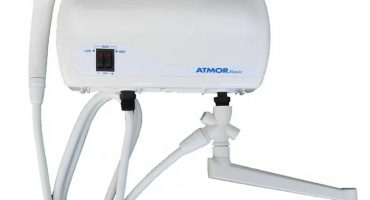High-quality and durable household appliances at an affordable price is becoming a rarity. Modern devices can rarely work for more than a year without any breakdowns. And in boilers, the main problem is the use of materials for the housing of too low quality. Accordingly - frequent leaks that can not be ignored. And if the water heater or boiler flowed from below (side, top or other place), then further information will help to quickly fix the malfunction.
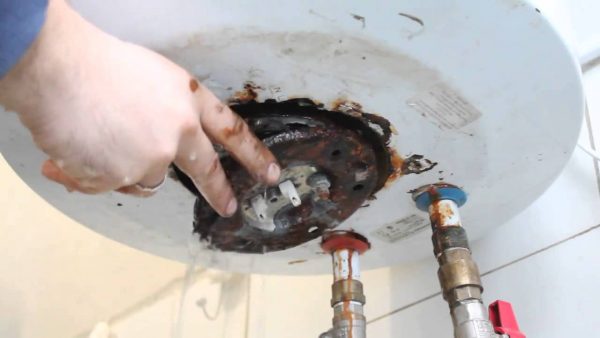
Classic water heater leak
Visual inspection is the main diagnostic method.
If leaks appear on the case of the device, do not immediately proceed to dismantle, first you need to make a preliminary visual inspection. This is a very important method that will help to quickly identify a leaky place.
The correct inspection sequence should be as follows:
- Fill the water heater with water to the maximum mark. It is not worth doing this forcibly, since a leak can appear exclusively at moments of heating water.
- Inspect the bottom of the water heater, especially the seams and the seal of the cover of the heating element.
- Inspect the walls of the device. In these places, leakage is extremely rare, only with prolonged use of the water heater.
- Inspect the top.
Often, worn rubber hoses for water intake or intake may be to blame for fluid smudges. Such places should be carefully examined in advance and subsequently do so periodically.
Simple ways to extend instrument life
No owner of a water heater wants to be left without hot water, for example, having come home from work. And such failures happen, according to the law of meanness, at the most inopportune moment. But putting some knowledge into practice can minimize the likelihood of a malfunction.
- The tank of a domestic water heater critically perceives increased pressure in the system, and the cause of a crack can be an excess of three atmospheres. To prevent this, a special, customizable gearbox with pressure gauge should be installed. By setting the nominal pressure at 2 atmospheres, it is possible to significantly extend the operational life of the instrument housing.
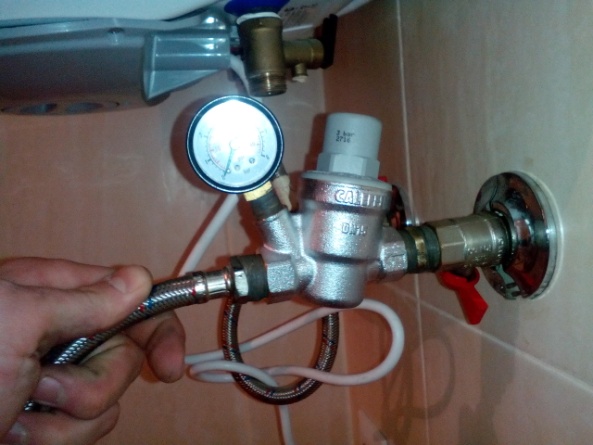
Household gear with pressure gauge
- The main pest of the internal surfaces of the water heater is scale. It is impossible to completely get rid of it, since the quality of water from a centralized water supply leaves much to be desired. Therefore, at least once every six months it is necessary to clean the device, not forgetting about the heating element.
- At the same time as cleaning the tank, check the condition of the magnesium rod. This element is the main degree of corrosion protection. When reducing its length to the minimum mark, the magnesium rod must be replaced with a new one.
- Do not set the temperature of the heating fluid above 50 degrees. Elevated temperatures adversely affect the condition of the body, as well as welds.
- To reduce the effect of scale on the appliance body and heating element, a filter can be installed on the fluid supply pipe. It is not necessary to choose an expensive model; you should only replace it in time.
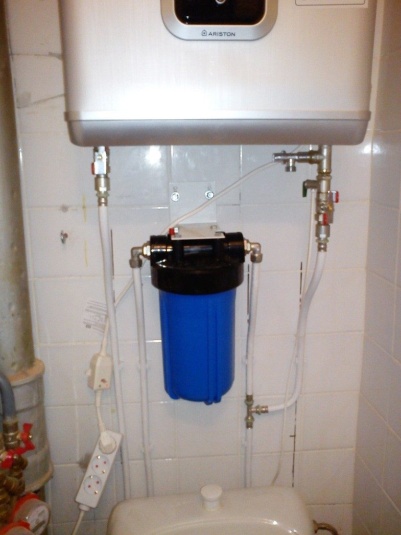
Water heater filter
The above methods do not require the application of force or the expenditure of large funds, but will help protect the water heater from many breakdowns and malfunctions.
Causes of water heater leakage
There are several reasons for the sudden leakage of a water heater and each of them requires a certain solution. You should know that repair “on the knee” leads only to a double waste of money. Therefore, it is better to invest a little and get a minimal set of tools that will definitely come in handy in the future.
Deformation and how to avoid it
The most unpredictable of breakdowns can occur both a few hours after installation, and a few years. It does not apply to a variety of factory defects and arises solely through the fault of the user. Deformation of the water heater body occurs due to excessive filling with liquid.
Unfortunately, after deformation of the body, the product cannot be repaired; you only need to purchase and install a new water heater.
The main ways to prevent body deformation:
- Install safety valve. Mandatory action, which should be performed first of all when connecting any domestic water heater. The safety valve is mounted in the area between the shut-off valve and the place of water supply to the device.
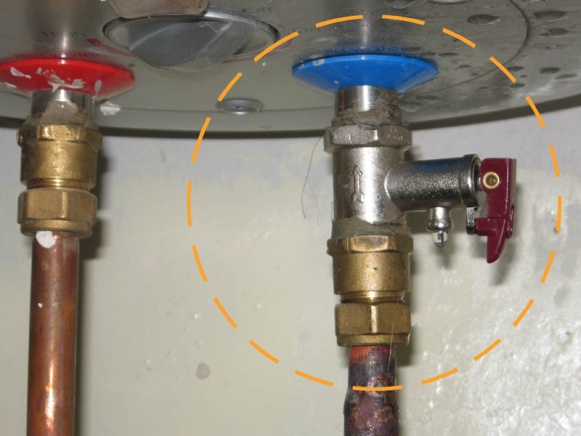
Standard safety valve
- Replacing the supply tubes. The consequence of installing such low-quality products is hydraulic shock on the inner surface of the housing, respectively, a gradual deformation.
The gasket under the heating element has deteriorated
The heating element is the main part of any boiler and becomes unusable every 1.5 - 2 years. But more often than not, a rubber sealant (for example, in Ariston tanks) that is located at the junction of the heater and the body of the heater does not stand up.
The sequence of its replacement is as follows:
- Disconnect the boiler from the mains and drain all water from the tank. This must be done carefully, as the liquid may be heated.
- Using a wrench or a cap head, unscrew the bolts securing the housing of the heating element with the housing of the heater. This should be done carefully, since during prolonged use of the device, the bolts may become sour. Excessive force will cause the bolt to be torn off and will have to be drilled.
- Remove the heater and remove the old gasket from the surface of its housing. Strip a little with fine-grained sandpaper.
- Put on a new gasket, install the heater in place and tighten the bolts. Here, too much force should not be applied - if you do not break the bolt, you can simply damage the internal thread.

O-rings for boiler heating element
If the gasket has become unusable, but at the moment there is no way to replace it and the water is leaking anyway, you should just try to tighten the bolts more tightly. This will get rid of the leak for a short time. But you should not postpone the replacement of the gasket in the long box.
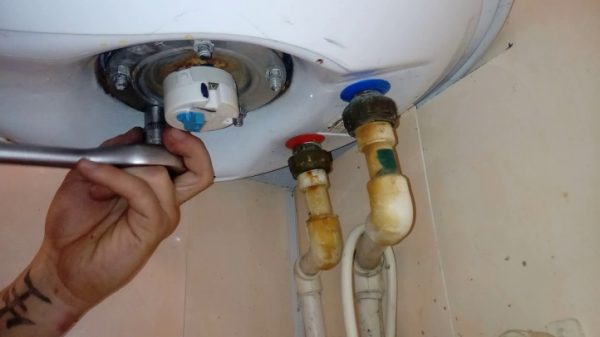
Just pull it up
It is much worse when a fluid leak begins from under those places on the cover of the heating element where the bolts are tightened. This means only the purchase of a new boiler, so the use of even semi-automatic welding will lead to deformation of the inner surface of the household appliance.
Very often, when replacing the water supply and drain pipes, home craftsmen do not exert any effort while tightening the rubber components. Insignificant streaks appear, to eliminate which it is only necessary to tighten the junction qualitatively.
How to detect factory defects
When buying a household appliance at a low price, it is entirely possible to count on factory defects. Defining it is quite problematic, so you should first make sure that:
- There is no external deformation of the body, which can be determined "by eye". The unnaturally curved surface of the tank will be clearly visible.
- When installing a household appliance, a magnesium rod and a new gasket under the heating element were installed.
If the water heater still flows or passes, then it is safe to say that the boiler has a factory defect. Marriage is determined very quickly, so you should immediately take the water heater to a replacement warranty center.
What tools are needed to repair
To eliminate the leakage of the water heater, you must have at hand a minimal set of tools that will not only reduce repair time, but also greatly simplify the task. Therefore, saving is not worth it, but it is best to go to the nearest hardware store.
Tool list:
- Adjustable wrench. You can make preliminary measurements and choose an adjustable wrench that fits the largest nut or bolt, but it is better to purchase a set of standard wrenches. At a cost will come out a little more, but such a thing will come in handy in the future.
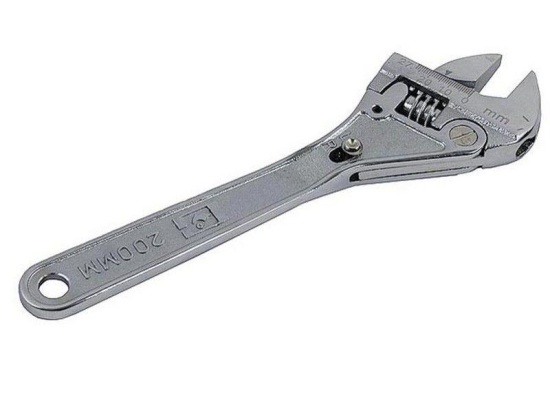
Plumbing Adjustable Wrench
- Multimeter. A device with which you can determine the health of the heating element. Like a set of keys, a multimeter will be useful at home, for example, during installation or troubleshooting in a home electrical network.

Simple multimeter for homework
- Rubber hose not 1.5 meters long, to drain the water from the boiler. It is best to purchase a pipe that is used in a car cooling system. Such a product can withstand very high fluid temperatures.
- Flat and curly screwdriver. Tools that any home craftsman should have.
- Assembly knife with a set of interchangeable blades. With careful handling, the mounting knife will last more than one year.
The list does not indicate consumables, for example, a gasket under the cover of a heating element. Such a product must be purchased only if the old gasket has become unusable.
Is the repair of the boiler relevant after leaks
Unfortunately, the device of modern boilers does not allow any repair or it will have such a price that it is better to purchase a new device under warranty.
The first reason why you should not give the water heater for repair is the special coating that is applied to the inside of the device during its manufacture. This coating is glass enamel - a substance that prevents the occurrence of corrosion. Glass enamel is applied in a thin layer, so welding can cause irreparable harm to such a layer. The consequence will be the rapid occurrence of rust, and, accordingly, through damage to the boiler body.
It should be remembered that the internal tank belongs to the category of non-separable elements, it will not work to get to it without damaging the case. Why is that? Because the boiler belongs to the category of short-lived household appliances. Therefore, you will need not only a standard tool, but also a special one. Or contact the appropriate workshop, but the repair price does not live up to expectations - it is best to purchase a new device.
A few more frequent breakdowns
Above were listed the most frequent breakdowns of water heaters that lead to fluid leakage. But there are other malfunctions that are not so common.
Dripping water from safety valve
The safety valve protects the fluid heating device from an excessive quantity, which can seriously damage the boiler. Together with the liquid, the pressure in the tank rises, respectively, damage to the body can occur.
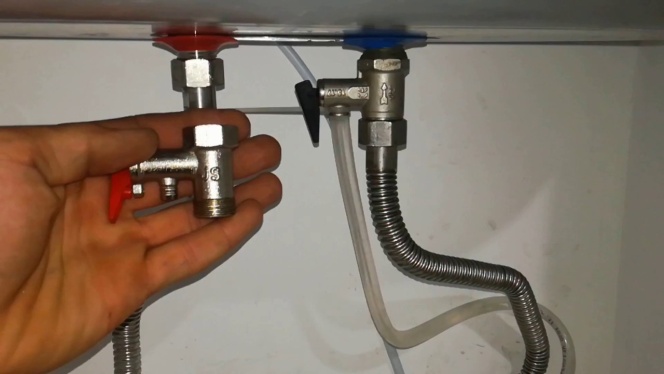
Relief Valve Replacement
The device of the safety or non-return valve is simple: a body made of brass, locking mechanisms and several springs of a certain stiffness. After exceeding the pressure on the main mechanism, it opens, releases the liquid, and then returns to its original position.
If small droplets appear from the pressure relief valve body, immediately pay attention to the rubber seal. It can become unusable and cause leakage. After replacing such a seal, water drops stop.
If the safety valve is flowing or check valve for water heater, it only means damage to the case. Even a microcrack that is not visible to the eye can lead to such consequences. A thorough inspection of the shut-off element should be carried out, and if the leak comes from the housing, then the safety valve should be completely replaced.
The boiler leaks when the water supply is open
Such a breakdown occurs when, with the hot water tap open, the water heater begins to leak. The reason for this situation is the pressure, which gradually decreases, when leaving the tank heated fluid. Most often, such a leak comes from rubber or silicone seals.
With a heated liquid, not only pressure affects the seal, but also temperature. As you know, with increasing temperature, rubber pads also expand. While there is hot water in the tank, the sealant holds it back and begins to pass immediately after cooling.
To eliminate the malfunction, you should lower half of the water from the boiler, determine where the liquid flows, and replace the gasket in this place.

